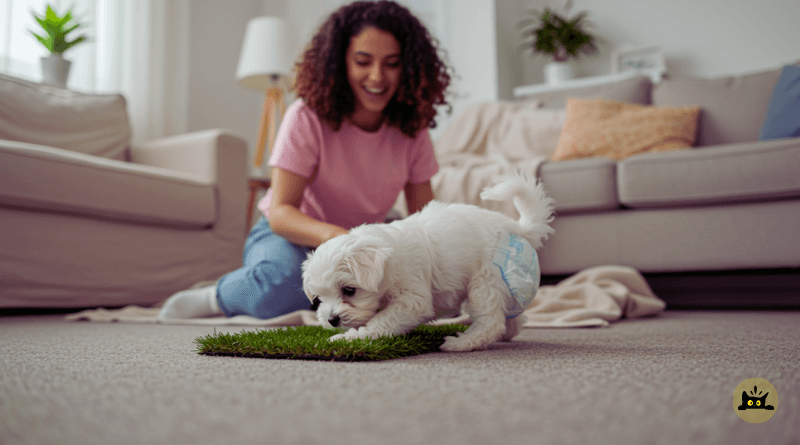Why Crate Training for Potty Success
In this guide to crate training potty success, crate training is a very helpful way for showing your dog where and when to go potty. By using your dog’s den habits and setting a steady schedule, you can speed up training and stop messes inside. This method works for puppies and rescue adults. Dogs feel safe in a small space and learn clear potty rules. This guide explains why crate training works, how to choose and use the right crate, benefits, common mistakes, potty routines, and clear steps for today.
Why Crate Training Potty Success Works
Den Habits Help Dogs
Dogs hide their mess from where they sleep. A right-size crate is a comfortable den that your dog will not want to soil. This helps dogs hold their pee and poop until you take them outside.
How Small Spaces Help
Small space makes dogs use better bladder control. Puppies can hold for their age in months plus one hours. For example, a three-month-old puppy can stay in the crate for about four hours before needing a break.
Reduces Anxiety
A crate gives dogs a safe zone when things change. Moving to a new home, loud noises, or visitors can stress dogs out. A crate trained dog goes in the crate to feel calm.
Benefits of Crate Training
Using a crate gives dogs a safe spot to rest. It helps them learn routines and stay calm when life gets busy. Your dog also learns that the crate is a happy place.
How to Start Crate Training
Choose a Crate That is Only Big Enough
Pick a crate that lets your dog stand, turn around, and lie down. Too big a crate may make your dog go in one corner. Too small makes your dog feel trapped. Wire crates you can resize are a good choice as your dog grows. Plastic crates work well for travel.
Start Small
Put the crate in your living room so your dog feels included. Add a comfy bed, a towel with your scent, and safe chew toys. Toss treats inside so your dog wants to go in. Use short fun sessions and stop before your dog feels stress.
Set a Steady Potty Schedule
Regular Breaks and Watching
Take your puppy out every one to two hours, after meals, play, naps, first thing in the morning, and last thing at night. Carry a leash to guide your puppy to your potty area.
Watch for Potty Cues
Look for circling, sniffing, whining, or walking to the door. When you see these signs, say “no” gently and go outside. The quicker you act, the faster your dog learns. Praise and give a treat right after your dog goes potty outside to build good habits.
Use a Potty Log
Write down each potty trip with time and location. This helps you spot patterns, like more trips after breakfast or longer holds in the afternoon.
Common Mistakes to Avoid
Forcing Your Dog
If your dog barks or whines, do not force it in the crate. Go back to short sessions with the door open. Give treats for calm behavior inside and outside the crate.
Skipping Breaks
Leaving a puppy in the crate too long leads to messes and stress. Follow the age-based rule: age in months plus one hours. For example, a two-month puppy should not stay in the crate more than three hours at once.
Not Cleaning Messes Well
Use an enzyme cleaner to get rid of smells. If scent remains, your dog may go again in the same spot. A good cleaner stops repeat accidents and protects your floors from stains.
What to Do at Night
Nighttime Potty Needs
Young puppies may need a late-night break. Use a crate with a waterproof tray or move the crate near your bedroom. If your puppy whines, say “no” gently, take them out, then return right away. No play so your puppy learns night trips are just potty.
What to Do if Accidents Happen
Accidents happen during learning. If you catch your dog in the act, say “no” gently and take them out to finish. Do not punish or rub nose. This causes stress and worry. When your dog goes after you take them out, praise and give a small treat so your dog knows the right spot.
Check Progress and Keep Going
Make one change at a time and write notes on results. Notice small wins like fewer messes or calmer crate visits. Over time, your dog learns that good behavior in and out of the crate leads to success.
Conclusion
Crate training uses dogs’ den habits to teach them where to go potty. By choosing the right crate, setting a steady schedule, and using a clear plan, you prepare your dog for potty training success. A crate trained dog enjoys a safe place and fewer accidents. Be patient and reward good behavior. With practice over time, your dog learns that the crate is a safe den and the yard is the right potty spot.
Sources : American Kennel Club, PetMD, American Veterinary Medical Association, VCA Animal Hospitals, Merck Veterinary Manual
Check out another article in this category that might interest you: Step by Step Dog Potty Training Guid

